Life in the Community of Tomorrow
In a short period of time Walt Disney conjured up a lot of ideas for his city. One of his biggest concerns was, naturally, how people would live there as opposed to in typical cities. His plans are radical even by today’s standards, over forty years after he envisioned them. Here are some aspects of everyday life that Walt had considered for his Experimental Prototype of the Community of Tomorrow, covered mainly in a 25-minute video you can watch here.
Working in EPCOT
Absolutely everyone 18 and older would have had to hold a job at EPCOT. Retiring wasn’t going to exist there. Outside of special circumstances, you would only be able to stop working when you died or after you left (possibly moving to a separate community elsewhere at Disney World). Walt believed that this would prevent slums or ghettos from forming in any part of his magical city. If everyone had a job then no one would be struggling to pay rent or eat. With everyone working all the citizens of the Experimental Prototype of the Community of Tomorrow would theoretically have their basic needs met.
Living in EPCOT
There would have been two different areas to live in EPCOT, depending on what you preferred and what you could afford. There would be high-density housing area for most people in the city. We only know a little about what those apartments would have been like. As urban homes they wouldn’t be very spacious. They were designed to easily adapt to the emerging technology that Walt Disney was so passionate about. The hardware (and someday the software) in your home would have been updated regularly. Walt claimed that the prices for these homes would have been “modest” and “competitive with the surrounding market.”
For the upper-class members of society in EPCOT, there were low-density areas more like neighborhoods. As you can see in the concept art pictured above, the residential areas were akin to petals on a flower. Houses would be on the rims of each of the petals, and inside the petal was a green area for grass, trees, etc. The area would also have recreational options and play areas for kids. Like the apartments, the houses would be equipped to easily update to emerging technologies.
A crucial part of residence in EPCOT was that no one but Disney would own the land. This was so Walt and his successors could easily make updates and changes without being slowed down by, or worse, halted completely by a vote not in their favor. This would make it easier for EPCOT to always be the most cutting-edge city possible, but various individuals and groups have questioned over the years the feasibility and morality of a system where residents have such little control.
Getting around in EPCOT
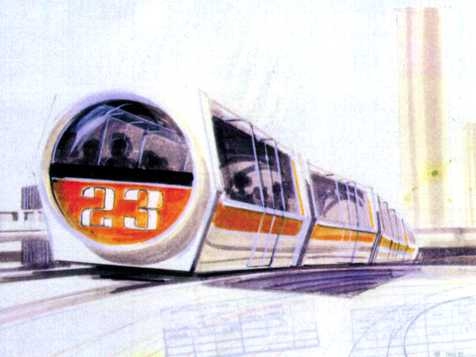
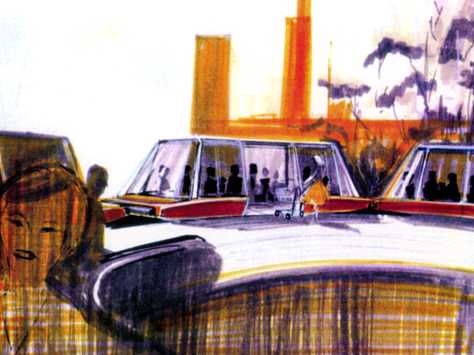
One of Walt Disney’s core philosophies regarding the Experimental Prototype of the Community of Tomorrow was that no one would need a car to travel within EPCOT. Walt fervently believed that communal transportation was the future. His specific future involved a little something you might be familiar with called the monorail system. It was introduced in 1959 at Disneyland, but there it was more another attraction than a monumental innovation. In Orlando it was going to be a futuristic transportation system that would go through the center of the city, connecting Walt’s magical city with the rest of the massive Disney World property.
Transportation within the city itself was going to be through a system called the WEDway PeopleMover. Described as a transportation system that never stopped moving, it would have sent people from the center to the outer edges of EPCOT. The monorail and the PeopleMover would come together at the EPCOT Transportation Lobby.
With both the monorail and the PeopleMover, cars wouldn’t be needed except for what Walt described in the video as “weekend pleasure trips.” The roads for those cars and for trucks carrying supplies that the city would need to keep running would be located underground, as to not disturb or endanger the pedestrians above. This connects to the fabled story of Walt Disney seeing a cowboy from Frontierland in Tomorrowland at Disneyland. Just like he didn’t want people to be distracted by the inner workings of his parks, he didn’t want residents to be reminded that EPCOT wasn’t a totally self-sufficient city. That’s a testament to Walt’s strive for perfection, as unattainable as it might ultimately be.
Visiting EPCOT
EPCOT would of course have plenty of visitors. People would have come to the city to see if it was a place they would want to live or just out of sheer curiosity over such a unique idea. They would have travelled into the city through the monorail and through the city via the PeopleMover, as mentioned above. But that still leaves the question of where visitors would stay. Walt dreamed up a grand 30-story Cosmopolitan Hotel and Convention Center, which would have been the tallest building in all of EPCOT. Like the roads, the parking lot would have been located underneath the city core. The roof would have been its own recreational area, with a pool, tennis courts, basketball courts and more to entertain the guests. Also surrounding the Cosmopolitan Hotel and Convention Center would be a lot of shops and restaurants, which leads to another aspect of life in EPCOT.
Experiencing culture in EPCOT
Walt Disney was very concerned with maintaining a sense of culture in his city. He respected America for being a land of immigrants, and wanted that to be showcased in his utopia with multiple districts that displayed a lot of diversity. The concept art for the international shopping center shows specific places for Spanish, Asian and Irish cultures. That was probably intended to just be the start. Look above at the Spanish quarter. This concept would ultimately see (a very different) life as the World Showcase at the Epcot theme park.
City services at EPCOT
The area between the core of the city and the elite residential area would be a substantial amount of grass field, referred to by planners as the Green Belt. City services would have been located here. That includes community centers, parks/playgrounds and churches. Providing services like those would probably have been one of the hardest aspects of the city to get right. Having places for a number of different groups to interact, enough recreational options for all residents and churches for all faiths would be no easy feat. Something so complex was probably a compelling reason for the people who ran The Walt Disney Company after Walt to get skittish about going through with EPCOT as a city.
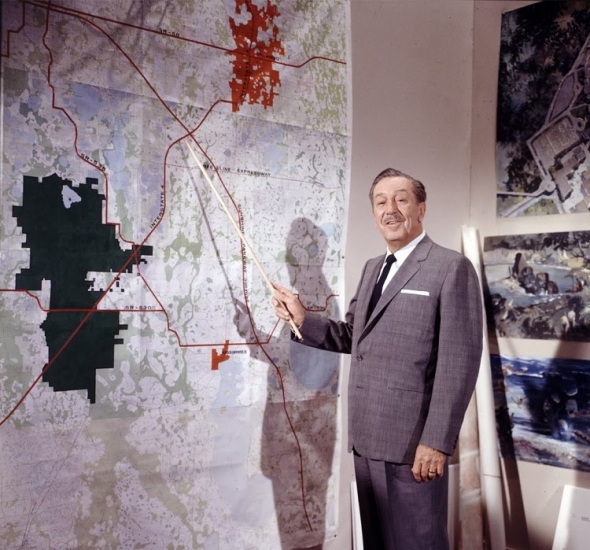
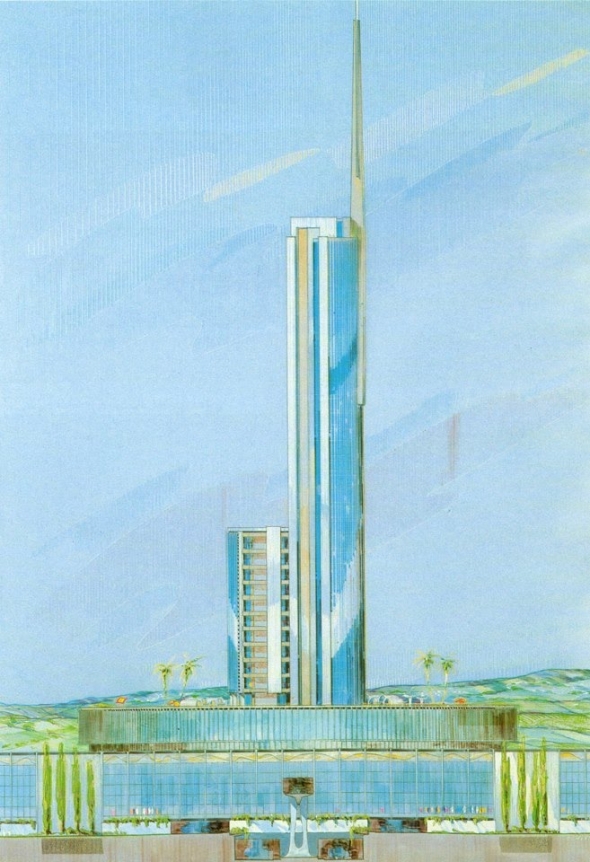
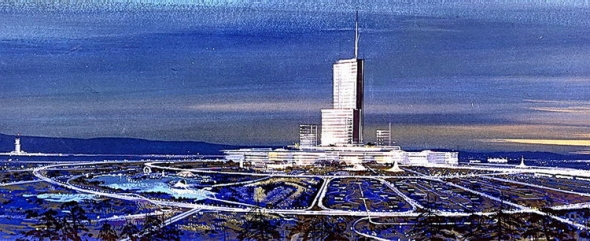
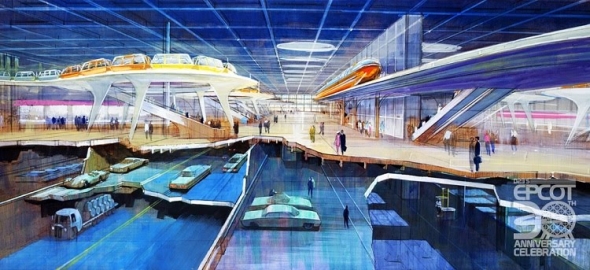
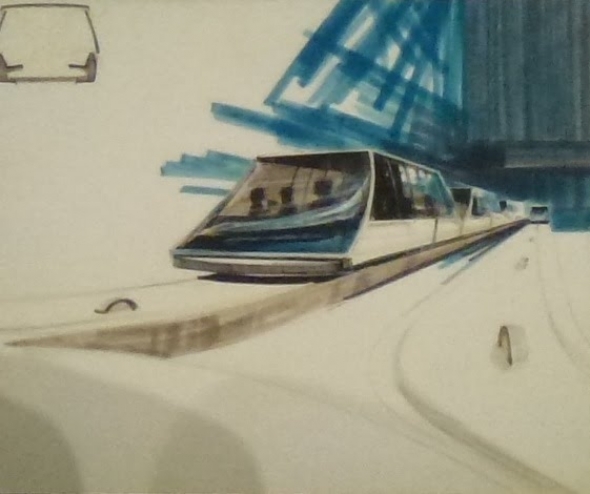
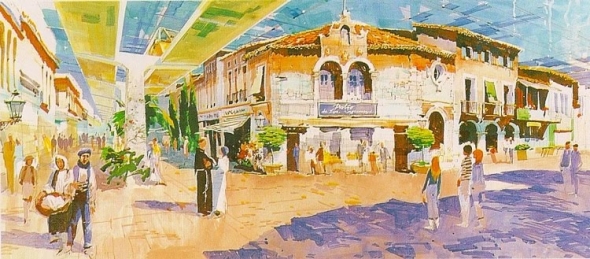
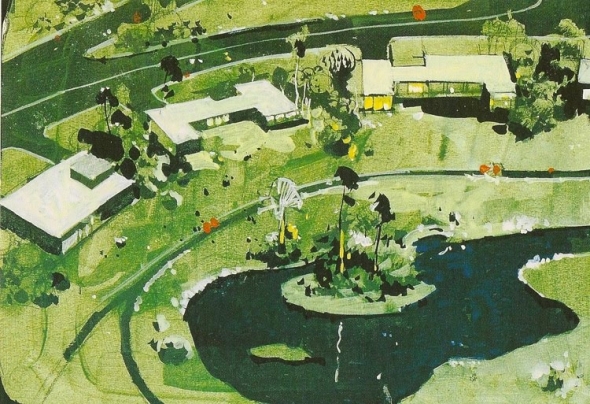
Add new comment